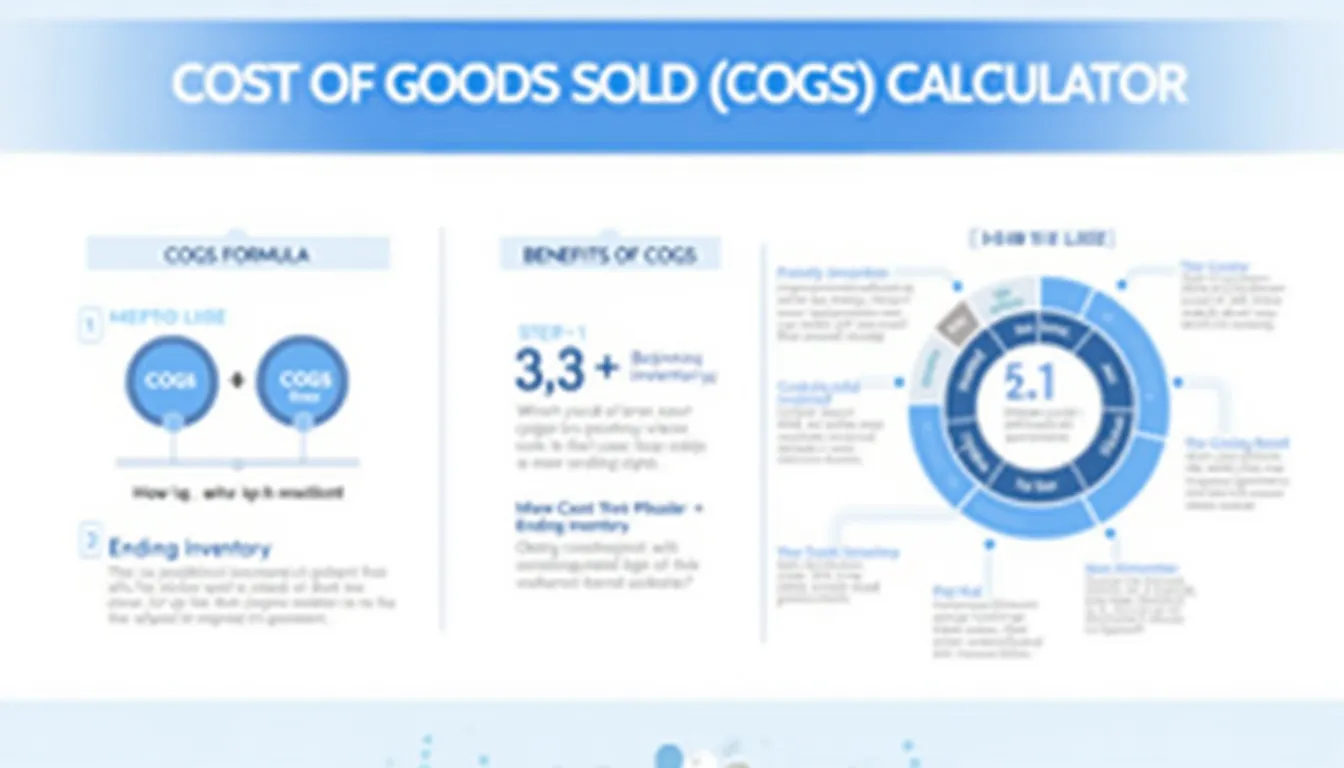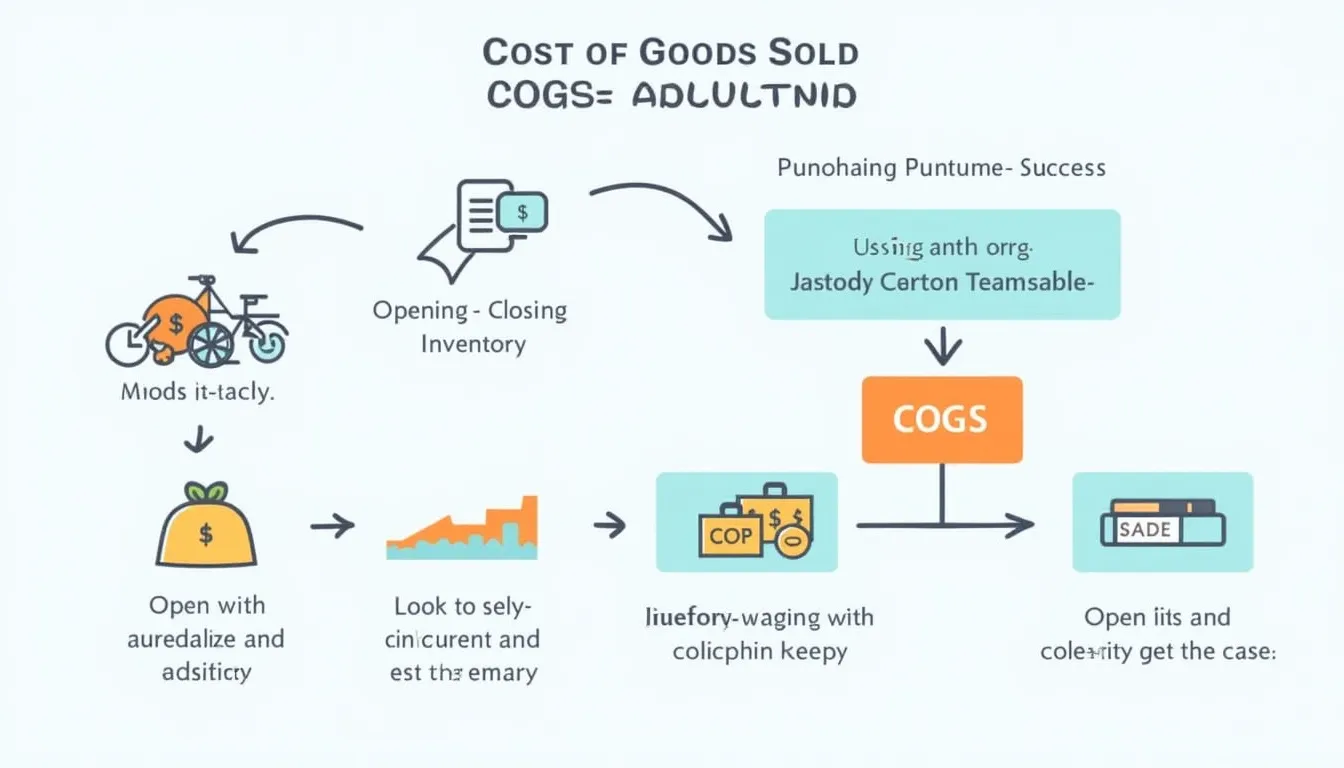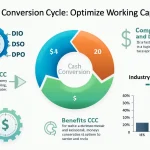Cost of Goods Sold Calculator
Is this tool helpful?
How to Use the Cost of Goods Sold (COGS) Calculator Effectively
Our COGS Calculator is designed to provide quick, accurate estimates of your direct product costs within a specific accounting period. To get the most precise results, follow these steps carefully:
- Enter Beginning Inventory ($): This is the dollar value of the inventory you had at the start of the period. Example: 12,000 or 78,500.
- Enter Purchases during the period ($): Include the total cost of goods you purchased or manufactured over the timeframe. Example: 45,000 or 130,750.
- Enter Ending Inventory ($): Input the value of inventory remaining at the end of the period. Example: 10,000 or 65,250.
- Calculate COGS: After entering all values, submit the form to automatically calculate your Cost of Goods Sold for the period.
This straightforward tool instantly computes the Cost of Goods Sold, helping you save time, reduce errors, and optimize your financial reporting with real-time results.
Introduction to the Cost of Goods Sold Calculator: Definition, Purpose, and Benefits
The Cost of Goods Sold (COGS) is a fundamental financial metric representing the direct costs incurred in producing or acquiring the goods your business sold during a given period. These costs typically include raw materials, direct labor, and other expenses directly tied to production.
Understanding and calculating COGS accurately is essential for businesses aiming to:
- Measure gross profit and overall profitability
- Make informed pricing strategies
- Manage inventory levels effectively
- Evaluate production efficiency
- Prepare accurate financial statements and tax filings
Our COGS Calculator simplifies this calculation process, allowing businesses of all sizes to analyze their cost structure efficiently, save valuable time, and enhance financial decision-making with consistent and reliable results.
Understanding the COGS Formula
The mathematical formula to calculate Cost of Goods Sold is expressed as:
$$ COGS = Beginning\;Inventory + Purchases – Ending\;Inventory $$This equation considers the inventory you start with, adds any additional goods or materials purchased, then subtracts the inventory remaining at the end of the period. The result reflects the total cost attributable to goods sold during that timeframe.
Example Calculations Using the COGS Calculator
Here are some sample scenarios demonstrating how the calculator works in practice:
Example 1: Small Boutique
- Beginning Inventory: $12,000
- Purchases during the month: $45,000
- Ending Inventory: $10,000
Using the formula:
$$ COGS = 12,000 + 45,000 – 10,000 = 47,000 $$The boutique sold $47,000 worth of products in that period. This figure helps evaluate profitability and adjust future pricing or inventory orders.
Example 2: Industrial Parts Manufacturer
- Beginning Inventory: $78,500
- Purchases and manufacturing costs: $130,750
- Ending Inventory: $65,250
Calculated as:
$$ COGS = 78,500 + 130,750 – 65,250 = 143,000 $$This manufacturer’s cost of goods sold, $143,000, provides valuable insights for supply chain planning and cost control.
Example 3: Online Retailer
- Beginning Inventory: $30,000
- Purchases over the quarter: $85,000
- Ending Inventory: $25,000
Resulting in:
$$ COGS = 30,000 + 85,000 – 25,000 = 90,000 $$With a COGS of $90,000, this business can strategically evaluate profit margins and make better inventory purchasing decisions.
Key Benefits of Using the Cost of Goods Sold Calculator
- Enhanced Accuracy: Reduces manual errors inherent in complex cost calculations.
- Time Efficiency: Provides instant results, saving hours of accounting work.
- Consistent Reporting: Ensures uniformity in cost tracking across different financial periods.
- Improved Financial Insights: Facilitates better understanding of your profitability drivers.
- Accessible Anytime, Anywhere: Cloud-based ease of use removes location constraints.
- User-Friendly Interface: Designed for ease of use by all business owners, regardless of financial expertise.
- Cost-Effective Solution: A free and reliable tool supporting smarter budgeting and pricing decisions.
Practical Applications of the COGS Calculator for Businesses
1. Accurate Financial Reporting and Compliance
Accurate COGS calculations are essential for generating fiscal reports and maintaining compliance with accounting principles. Using this calculator ensures your financial statements reflect true cost figures, which supports auditing and tax reporting processes.
2. Informed Pricing and Profitability Analysis
Understanding your direct product costs lets you set competitive yet profitable prices. The calculator helps identify your baseline expenses, enabling effective pricing strategies that protect profit margins.
3. Effective Inventory Control and Budgeting
Monitoring beginning and ending inventory values assists with forecasting and controlling stock levels. Accurate COGS data improves budgeting efficiency by aligning purchase orders with actual sales trends.
4. Production Efficiency Assessment
Regularly calculating COGS allows businesses to analyze production costs and operational efficiency over time. Variations can indicate areas for process improvement or cost savings.
5. Tax Preparation and Compliance
COGS directly impacts taxable income since it’s deductible from revenues. Using this calculator helps ensure your tax filings are accurate, potentially reducing liabilities and minimizing audits.
Important Disclaimer
The calculations, results, and content provided by our tools are not guaranteed to be accurate, complete, or reliable. Users are responsible for verifying and interpreting the results. Our content and tools may contain errors, biases, or inconsistencies. Do not enter personal data, sensitive information, or personally identifiable information in our web forms or tools. Such data entry violates our terms of service and may result in unauthorized disclosure to third parties. We reserve the right to save inputs and outputs from our tools for the purposes of error debugging, bias identification, and performance improvement. External companies providing AI models used in our tools may also save and process data in accordance with their own policies. By using our tools, you consent to this data collection and processing. We reserve the right to limit the usage of our tools based on current usability factors.







